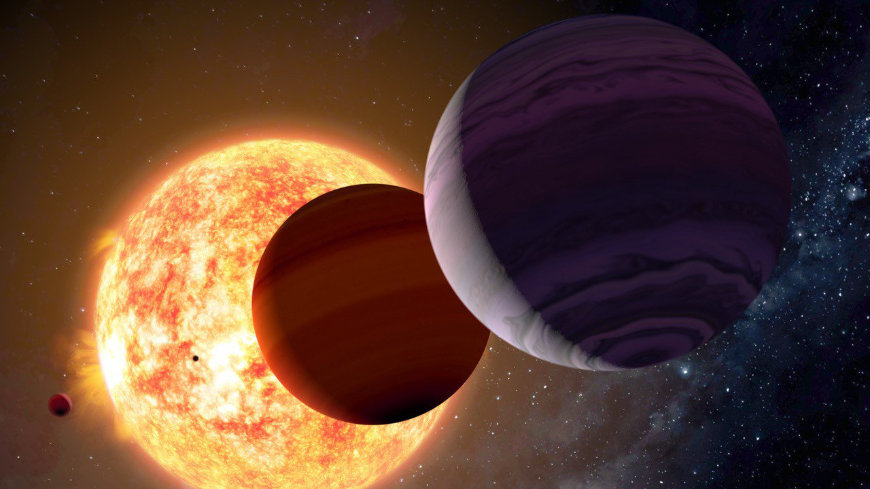Surprisingly huge planets around V1298 Tau
Researchers have successfully determined the masses of giant planets around the young star V1298 Tau. The result was surprising, because the mass of the worlds is comparable to the mass of the gas giants of our solar system. If gaseous planets did indeed reach these masses very quickly, the composition of Jupiter and Saturn could be different from what was previously thought.
|
Artistic representation of the exoplanet system around the sun-like star V1298 Tau. [Groansicht] |
The new study reports measuring the masses of two giant planets orbiting the sun-like star V1298 Tau. The star is only 20 million years old. Planets in the system were identified in 2019 using data from Kepler– A NASA space telescope was discovered, which made it possible to measure its size – slightly smaller than Jupiter – and its orbital time – 24 and 40 days for V1298 Tau b and e.
Dr. says. Alejandro Sorrez Mascario from Canary Islands Institute of Astrophysics (IAC). “The parent stars are very active, and until recently it was not even possible to think of trying. Thanks to the combination of observations with space telescopes, intense radial velocity studies from ground-based observatories and the use of the most advanced analytical techniques. It is possible to see what was happening in the early stages. of the development of planetary systems”.
For the new measurements of planetary masses, it was necessary to separate the signals generated by the planets from the signal generated by the activity of the star, which is almost ten times greater. This is where the specialty of STELLA (Stellar Activity) comes in. “By covering large wavelengths from ultraviolet to infrared with high spectral resolution, STELLA can track the magnetic activity of a star,” explains Professor Klaus Strasmere, Scientific Director of the Cosmic Magnetic Fields Division at AIP and director of the STELLA project.
The study showed that the masses and radii of planets V1298 Tau b and c are surprisingly similar to those of the giant planets of the Solar System and other ancient exoplanet systems. Measurements made for the first time of young giant planets, made it possible to verify existing concepts of the formation of planetary systems.
Dr. explains. Vctor J. Snchez Bjar, IAC researcher. “We now know that they could be the size of planets in our solar system in a very short time.”
Studying young planetary systems gives researchers information about what happened in the infancy of our solar system. “We still don’t know if V1298 Tau and its planets are normal and its evolution is similar to that of most planets, or whether we’re dealing with one exception. If this is the normal case, then that means that the evolution of planets like Jupiter and Saturn was very different from what we think, Comments Dr. Nicolas Lodieu of IAC, who was also a former PhD student at AIP. The results thus help to gain a more solid idea of the early evolution of planetary systems like ours.
Determining the mass requires a great deal of monitoring and the cooperation of many observatories and institutions from different countries. The team combined radial velocity measurements from instruments such as the HARPS-N am . Ultra-Stable High Resolution Spectrophotometer Galileo National Telescope (TNG) from the Roque de los Muchachos Observatory (ORM), the CARMENES High Resolution Spectrophotometer at the Calar Alto Observatory, the HERMES Spectrophotometer at the Mercator Telescope, also at ORM, and the SES instrument from the STELLA telescopes of the AIP TED Observatory. The researchers also used observations from the Las Cumbres Observatory.
The team publishes its findings in a specialized article in the journal natural astronomy He appeared.
|
|
|
|
|
|











